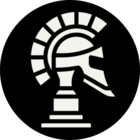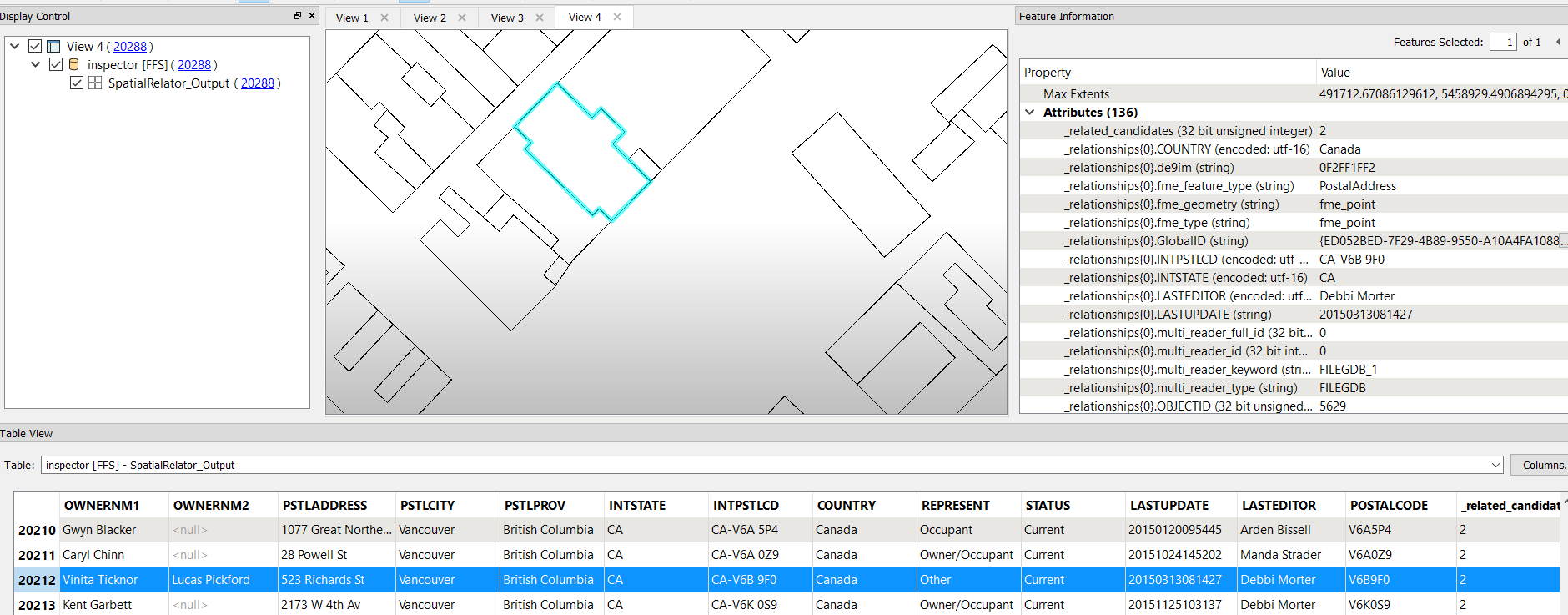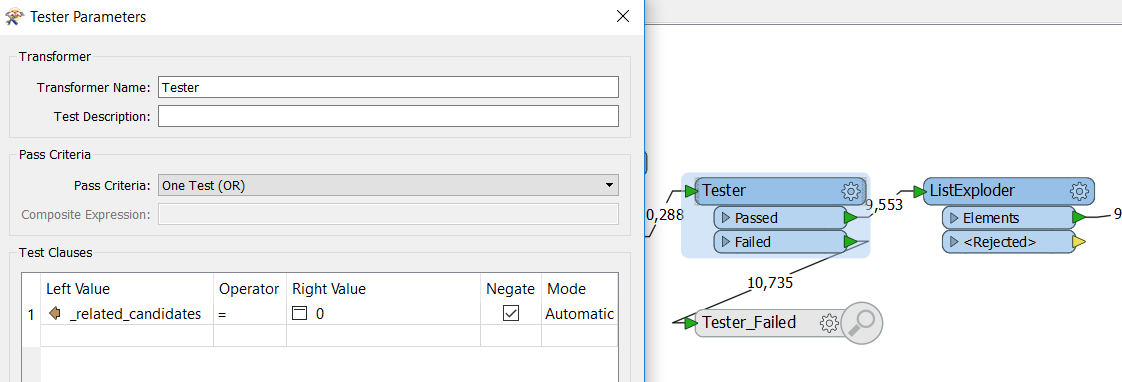I am attempting to make a spatial relation between a point and a polygon file.
The point file holds unit level address information. This is a point feature class that will have a point location for a street address. For example, 234 First Street will have one point representing it. However, in this point file, if there are many Units at a single street address, there will be many points lying on top of each other. Say there are two units at 234 First Street, there will be two points directly on top of each other, say, A-234 First Street and B-234 First Street.
The polygon file holds all of the parcel information. This parcel information has the zoning and parcel information attached. Say, Parcel A is zoned R1, Parcel B is zoned R1 and RR2, etc...
We want to surface this information in our Web GIS at a unit level. Displaying all pertinent info for each unit address individually. We would like to join each single address point to a single parcel. Essentially creating a many to one relationship. Many being the addresses (unit level) to the single parcel they sit on.
We would like the output to be parcel based. With each address point having one parcel attached to it. This is so that when interacting with the parcels on a Web GIS, we can just click on the parcel and get the unit information. Thus reproducing the way the addresses sit on top of each other, just only with the Parcels this time.
I have tried beginning with the SpatialRelator, but am unsure as the output I am producing only has attributes from either one or the other inputs. Before continuing I figured I'd ask.
Any recommendations?
Thanks!














